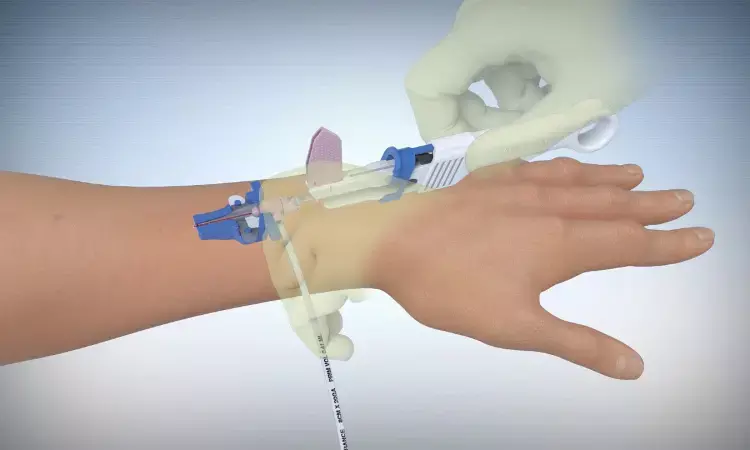- Home
- Medical news & Guidelines
- Anesthesiology
- Cardiology and CTVS
- Critical Care
- Dentistry
- Dermatology
- Diabetes and Endocrinology
- ENT
- Gastroenterology
- Medicine
- Nephrology
- Neurology
- Obstretics-Gynaecology
- Oncology
- Ophthalmology
- Orthopaedics
- Pediatrics-Neonatology
- Psychiatry
- Pulmonology
- Radiology
- Surgery
- Urology
- Laboratory Medicine
- Diet
- Nursing
- Paramedical
- Physiotherapy
- Health news
- Fact Check
- Bone Health Fact Check
- Brain Health Fact Check
- Cancer Related Fact Check
- Child Care Fact Check
- Dental and oral health fact check
- Diabetes and metabolic health fact check
- Diet and Nutrition Fact Check
- Eye and ENT Care Fact Check
- Fitness fact check
- Gut health fact check
- Heart health fact check
- Kidney health fact check
- Medical education fact check
- Men's health fact check
- Respiratory fact check
- Skin and hair care fact check
- Vaccine and Immunization fact check
- Women's health fact check
- AYUSH
- State News
- Andaman and Nicobar Islands
- Andhra Pradesh
- Arunachal Pradesh
- Assam
- Bihar
- Chandigarh
- Chattisgarh
- Dadra and Nagar Haveli
- Daman and Diu
- Delhi
- Goa
- Gujarat
- Haryana
- Himachal Pradesh
- Jammu & Kashmir
- Jharkhand
- Karnataka
- Kerala
- Ladakh
- Lakshadweep
- Madhya Pradesh
- Maharashtra
- Manipur
- Meghalaya
- Mizoram
- Nagaland
- Odisha
- Puducherry
- Punjab
- Rajasthan
- Sikkim
- Tamil Nadu
- Telangana
- Tripura
- Uttar Pradesh
- Uttrakhand
- West Bengal
- Medical Education
- Industry
Ultrasound guidance improves first-pass among patients requiring venous cannulation

Ultrasound guiding may improve first-pass and overall cannulation success in patients with challenging landmark method, but it has no discernible impact on discomfort, says an article published in Cochrane Database of Systematic Reviews.
One of the most important procedures in medicine is the insertion of a peripheral intravenous line. It entails inserting a thin, flexible tube (sometimes referred to as a catheter or cannula) using a needle into a vein. This procedure is called "cannulation." It is required when giving medications, delivering fluids, and taking blood samples. In this study, Tada M. and colleagues sought to determine whether ultrasound guidance for peripheral intravenous cannulation in adults was more effective and secure than the landmark technique. They also wanted to know if patients who had cannulation classified as difficult, moderately challenging, or easy used ultrasonography guidance differently.
In this study, papers comparing the outcomes of ultrasonic guidance to the landmark technique for peripheral intravenous cannulation in adults were rigorously looked for. Based on elements such study methodologies and sizes, the results of the studies were aggregated and graded for their confidence in the evidence.
The key findings of this study were;
1. Researchers discovered 16 studies with 2267 participants contrasting the landmark technique with peripheral intravenous cannulation under ultrasound supervision.
2. The effectiveness of ultrasonic guidance was influenced by how challenging it was to cannulate patients using the landmark technique.
3. People who were considered "difficult" to cannulate showed the most effect, and the effect shrank as the difficulty increased.
4. "Difficult" patients, ultrasound guidance may improve first-pass success of cannulation and overall success of cannulation, but did not appear to have a significant impact on patients' pain.
5. In 'moderately difficult' patients, ultrasound guiding likely boosted the cannulation's first-pass success, but there was no discernible impact on patients' pain. No research evaluated cannulation's overall effectiveness.
Reference:
Tada, M., Yamada, N., Matsumoto, T., Takeda, C., Furukawa, T. A., & Watanabe, N. (2022a). Ultrasound guidance versus landmark method for peripheral venous cannulation in adults. Cochrane Database of Systematic Reviews, 12(12), CD013434. https://doi.org/10.1002/14651858.CD013434.pub2
Neuroscience Masters graduate
Jacinthlyn Sylvia, a Neuroscience Master's graduate from Chennai has worked extensively in deciphering the neurobiology of cognition and motor control in aging. She also has spread-out exposure to Neurosurgery from her Bachelor’s. She is currently involved in active Neuro-Oncology research. She is an upcoming neuroscientist with a fiery passion for writing. Her news cover at Medical Dialogues feature recent discoveries and updates from the healthcare and biomedical research fields. She can be reached at editorial@medicaldialogues.in
Dr Kamal Kant Kohli-MBBS, DTCD- a chest specialist with more than 30 years of practice and a flair for writing clinical articles, Dr Kamal Kant Kohli joined Medical Dialogues as a Chief Editor of Medical News. Besides writing articles, as an editor, he proofreads and verifies all the medical content published on Medical Dialogues including those coming from journals, studies,medical conferences,guidelines etc. Email: drkohli@medicaldialogues.in. Contact no. 011-43720751


